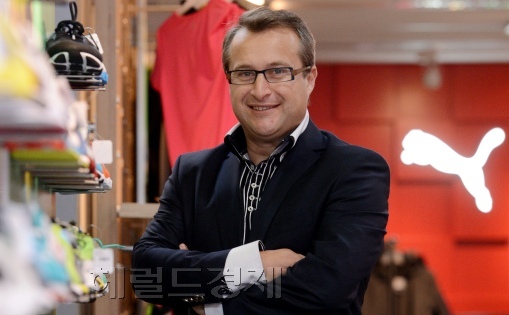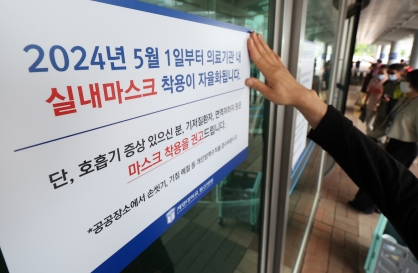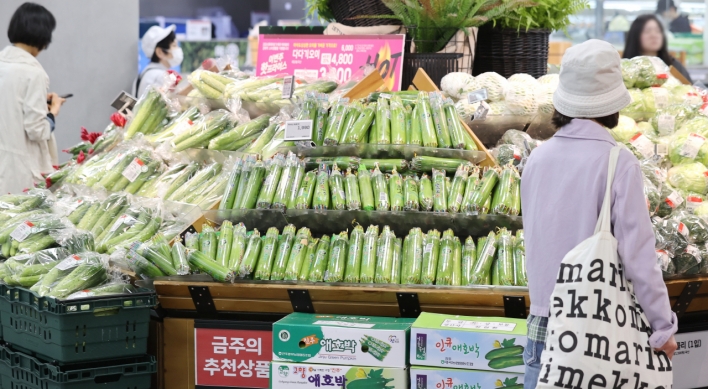‘Less is more’ is Puma Korea’s key strategy
General manager says will focus on footwear first to win back teen consumers
By Korea HeraldPublished : Nov. 19, 2012 - 20:23
Wearing a pair of sneakers or a t-shirt with the Puma logo was a sure-fire way to be “in” among teenagers here about a decade ago. Cheesy knock-offs reading “Pama” or “Fuma” were easily spotted on the streets, reflecting the popularity of the German brand.
During the past few years, however, the fever has waned. Olivier Lorans, general manager of Puma Korea, said that he is well aware of this, and has plans to win back the teens.
“During those couple of years, it was not clear what the brand stood for. A new sportswear? A new lifestyle? The key mission right now is to make it really clear,” Lorans told The Korea Herald. He took his post as head of Puma Korea earlier this year.
“We are going to need about two to three years to reignite the brand. The potential is there, but a bit faded and shadowed. We have to bring uniqueness on board and localize the marketing.”
The main focus of the brand will be footwear for the first few years, he said, and it will target high school and university students. Puma plans to soon hold a night marathon to promote its new florescent running shoes. It will also roll out a new campaign in March featuring Korean celebrities.
During the past few years, however, the fever has waned. Olivier Lorans, general manager of Puma Korea, said that he is well aware of this, and has plans to win back the teens.
“During those couple of years, it was not clear what the brand stood for. A new sportswear? A new lifestyle? The key mission right now is to make it really clear,” Lorans told The Korea Herald. He took his post as head of Puma Korea earlier this year.
“We are going to need about two to three years to reignite the brand. The potential is there, but a bit faded and shadowed. We have to bring uniqueness on board and localize the marketing.”
The main focus of the brand will be footwear for the first few years, he said, and it will target high school and university students. Puma plans to soon hold a night marathon to promote its new florescent running shoes. It will also roll out a new campaign in March featuring Korean celebrities.

“We are compared with Nike and Adidas, and we need to be different. We will be introducing a whole new concept of running,” said Lorans.
The upcoming running shoes, for example, will have a flexible outsole that shifts as the wearer runs, depending on the movements of the legs and feet. The GM explained that it will be similar to the way the sole of an animal, like a Puma, works when it runs.
The brand has been conducting collaboration projects as well to appeal to young consumers, by partnering with chic designers such as Jill Sander, Alexander McQueen, Mihara Yasuhiro, Hussein Chalayan, and most recently Push Button by Korean designer Park Seung-gun.
The company, however, does not have plans to expand the line-up at the moment.
“I am fully confident that we don’t need that much. We need the right one to execute perfectly. We are going to focus on this one, make it big and try to make the consumer excited, instead of having additional ones. Less is more is the key strategy for everything,” he said.
“Less product but stronger” is in fact the main strategy Lorans has in mind for the brand which aims to reorganize its product line-ups and make it stronger.
“It is probably not what we did in the past. What I hope to do is to have the organization to deliver fewer but bigger stories. One style, but 10 colors, not five styles and few colors,” he said.
He hinted that one of the five key initiatives planned out for next year’s spring and summer season includes the classic versus future theme. The brand is going to roll out an updated version of its significant classic line first introduced in the 1960s along with the original versions, having consumers to choose their pick.
Doing business in Korea can be challenging for a sportswear brand, said Lorans, because it needs to create the trend, excitement, and new initiatives. Korean consumers are very trend-conscious and a successful brand would be the one creating the trend to lead them.
“In Europe, if there is a trend, the style leaders immediately go the other way. In Korea, though, everyone follows the trend. So it can be an opportunity, but the thing is that we have to create the trend. In Korea, a trend continues on for about five to six years. The style lasts a bit longer,” said Lorans.
A foreign company needs to overcome slight disadvantages here as well, as it may be a little less flexible in terms of adjusting to the Korean market when compared with local players like E-land, because it needs to be global.
“Think global and act local. We have two key challenges,” he said.
By Park Min-young (claire@heraldcorp.com)
-
Articles by Korea Herald




![[Music in drama] Rekindle a love that slipped through your fingers](http://res.heraldm.com/phpwas/restmb_idxmake.php?idx=644&simg=/content/image/2024/05/01/20240501050484_0.jpg&u=20240501151646)

![[New faces of Assembly] Architect behind ‘audacious initiative’ believes in denuclearized North Korea](http://res.heraldm.com/phpwas/restmb_idxmake.php?idx=644&simg=/content/image/2024/05/01/20240501050627_0.jpg&u=20240502093000)


![[KH Explains] Will alternative trading platform shake up Korean stock market?](http://res.heraldm.com/phpwas/restmb_idxmake.php?idx=644&simg=/content/image/2024/05/01/20240501050557_0.jpg&u=20240501161906)









